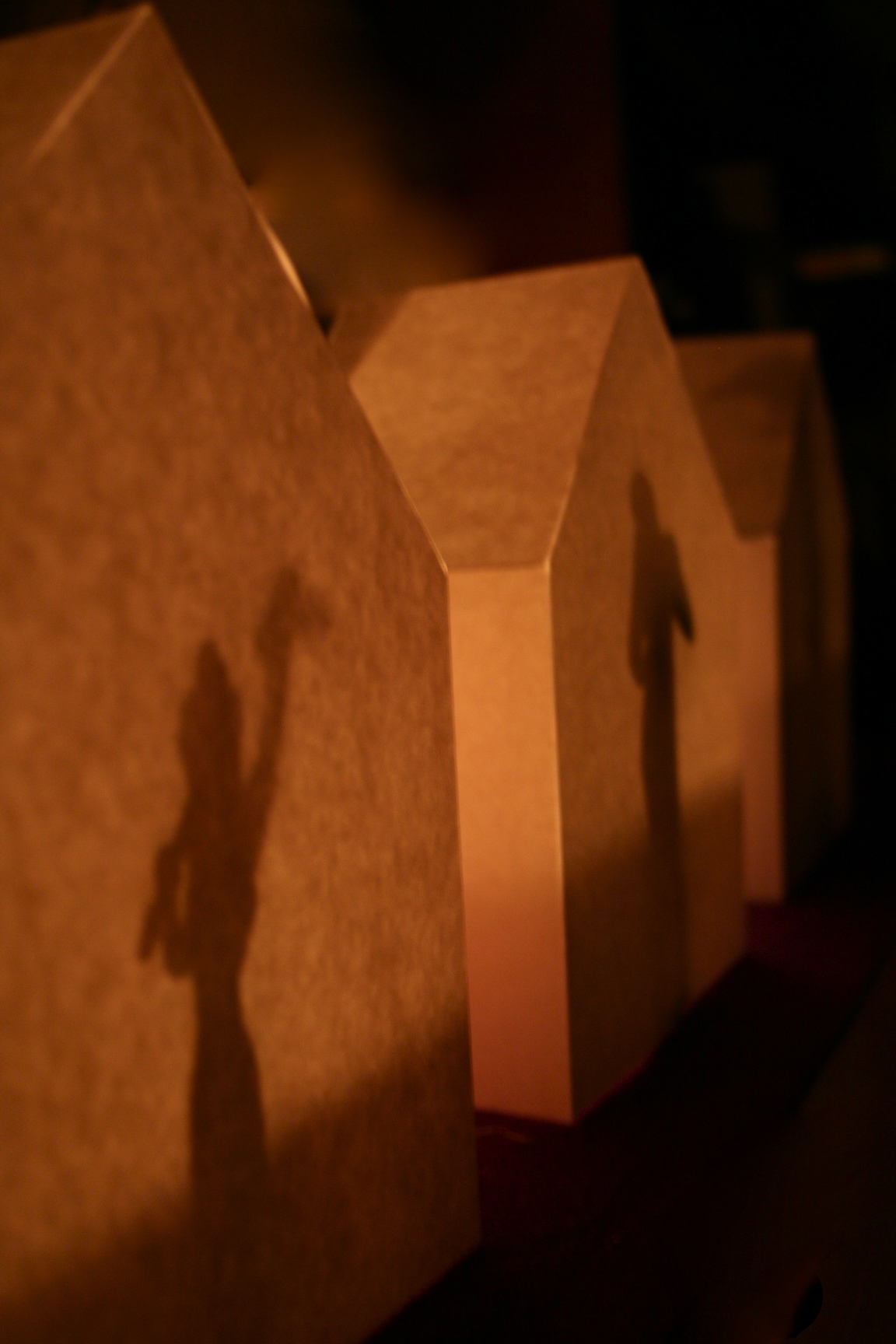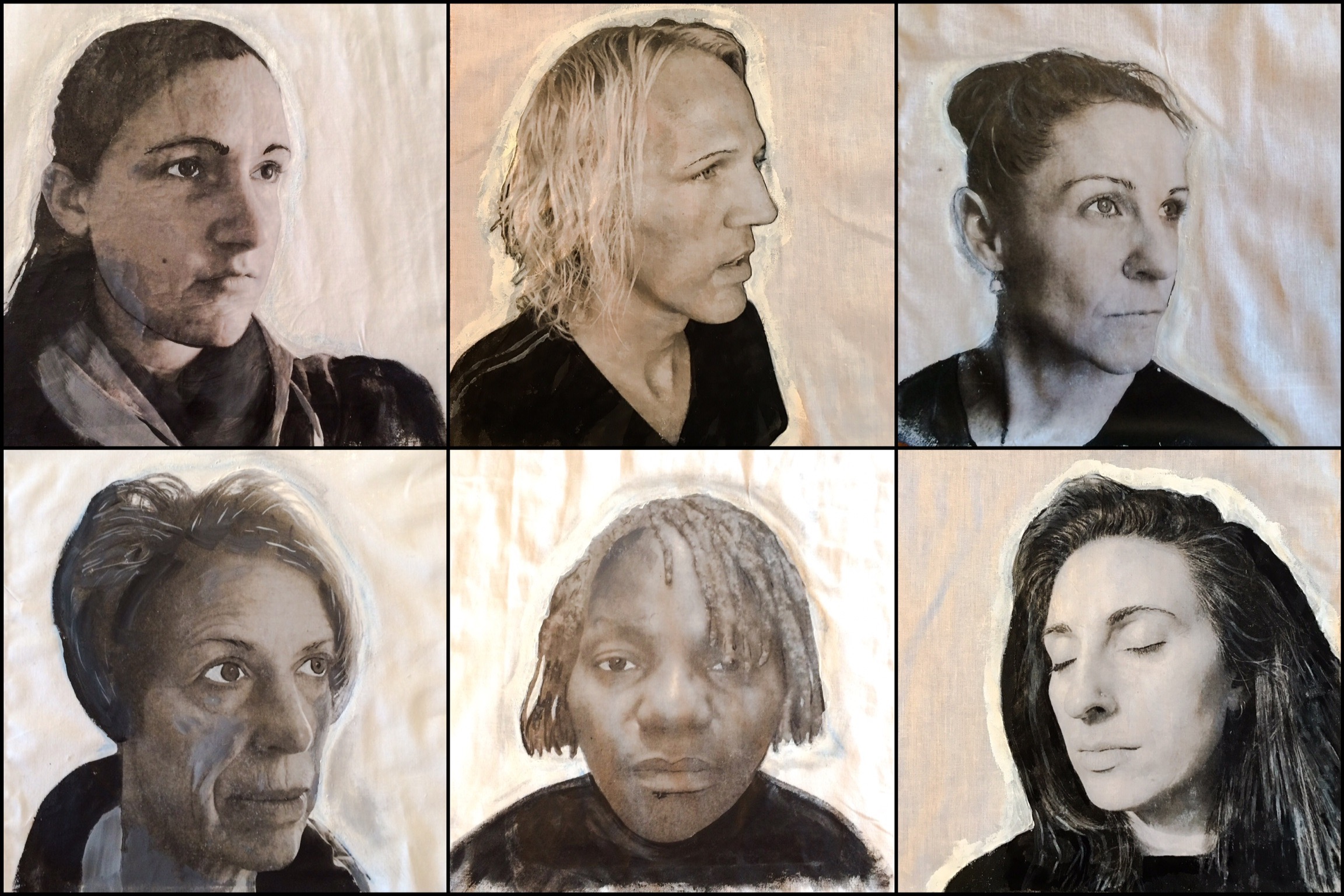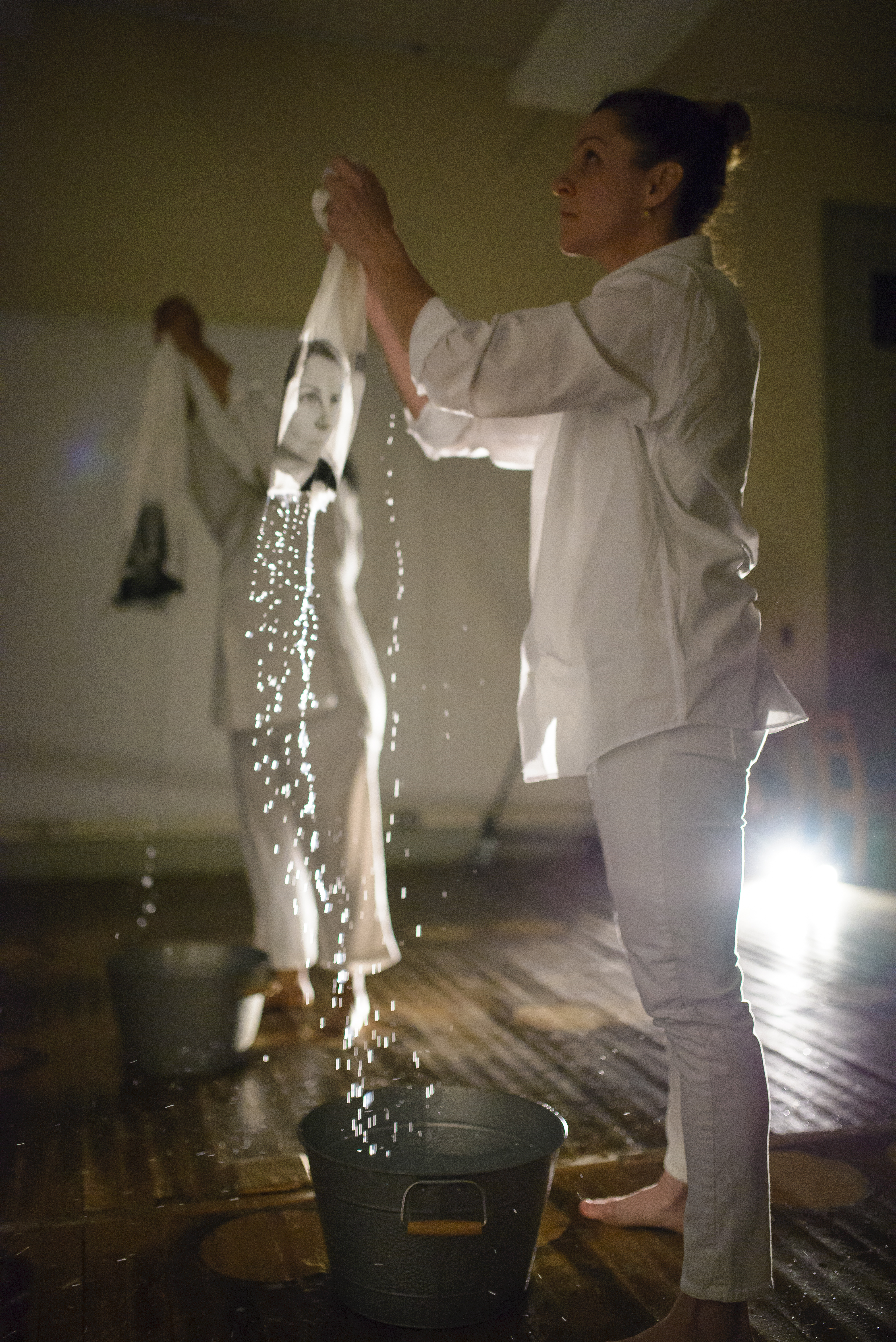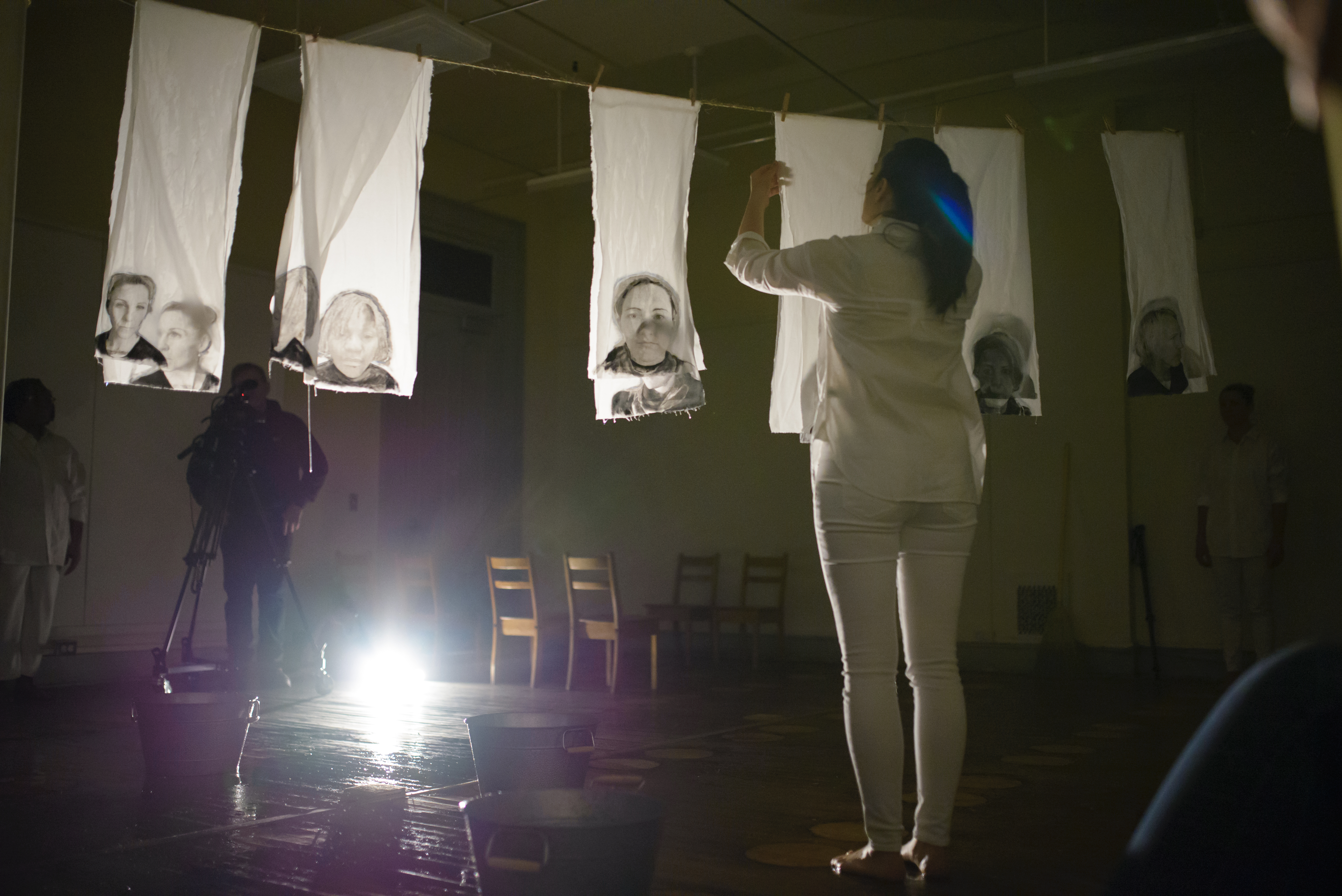The Voyage of my People- Sculpture and Live Performance- 2013
This piece addresses what it means to have a splintered ancestry. The sculpture remained in exhibition for two weeks and during that time I did several performances. The performances would alter the soundscape that was paired with the sculpture.
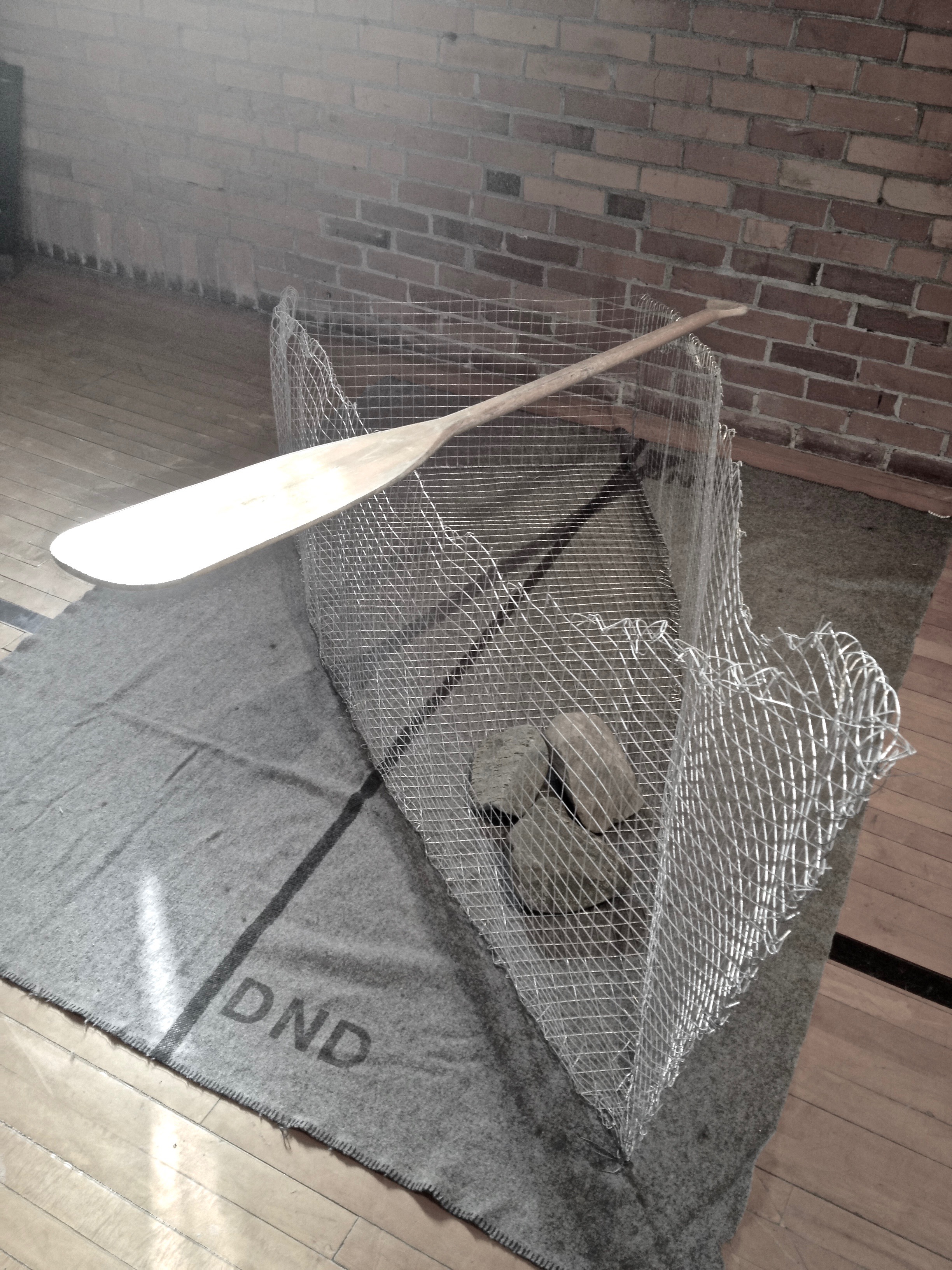
Breathing Room – Video, Sculpture, and Sound Installation – 2012
For this piece I built a four-sided room with a door in the middle of the gallery space. Videos were projected on all four external walls of the room. The door to the space was locked, and from inside the locked room a recording of breathing could be heard emanating from the room. The videos showed people breathing. Each person is alone in their video segment. On the door is projected footage of someone looking through a peephole, but from the side where they can be observed but would be unable to see the observer. Below are video clips from the projected footage.

Conversation Piece – Video Installation and Sculpture- 2011
For this piece I filmed several deeply engaged conversations between people. I then edited out all of the talking so all that remained were the silences, glances, and facial expressions between words. 60-minute conversations were generally reduced to approximately 10 minutes or less. I displayed the footage from a television placed on a fully set dinner table. These are video clips from the footage I used.
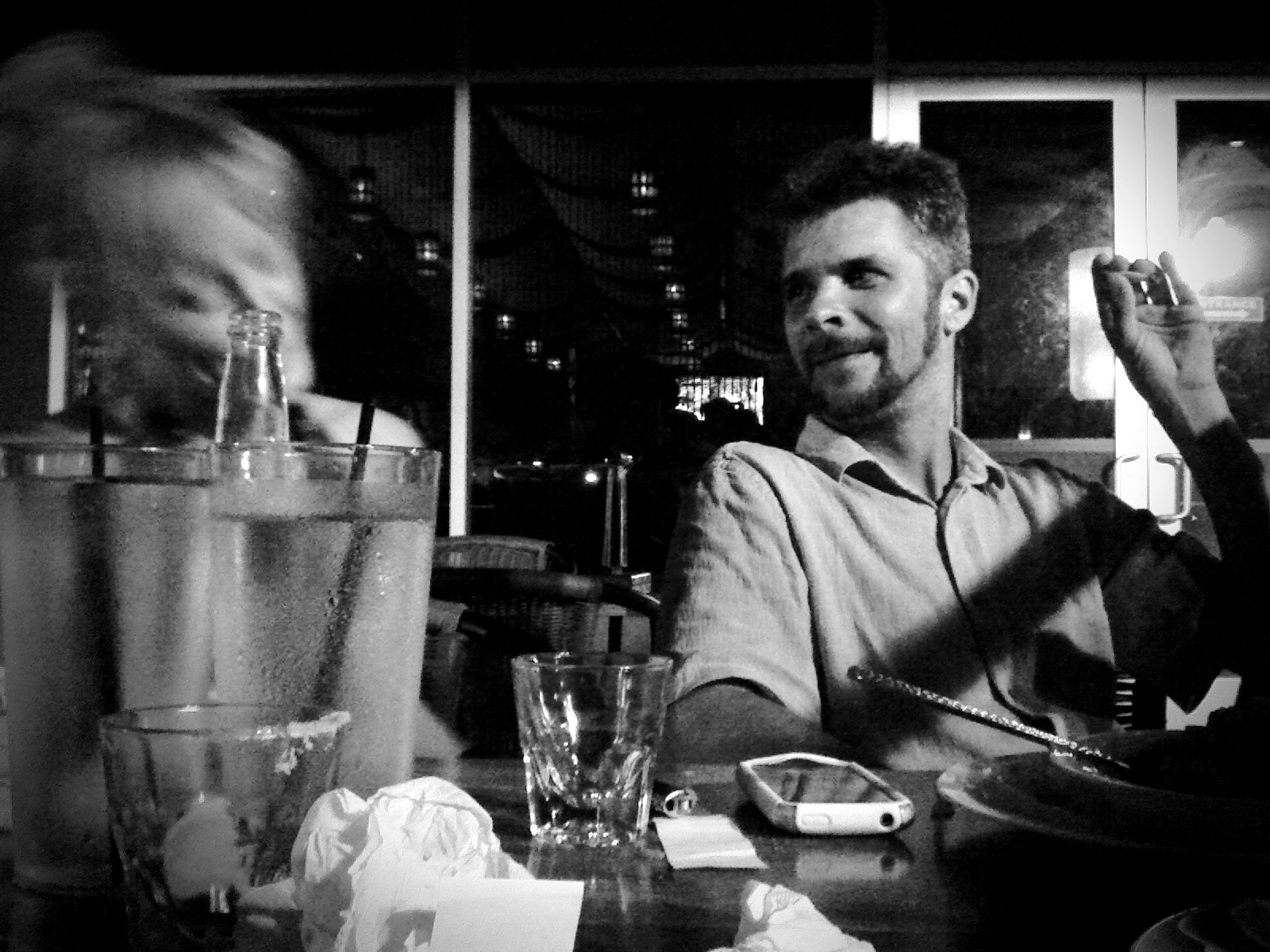
942 Days – Installation/Performance Art – 2009
This piece included a live musical and dance performance. For 942 days I documented, based on the news, a daily birth and a daily death. Every piece of paper pinned to the wall signified those comings and goings. The audience was encouraged to pin papers signifying births and deaths that were relevant to them.

Paper House – Sculpture, drawing, performance – 2009
For this piece I did drawings of neighbors (unbeknownst to them) based upon how I could see them through their windows from my own apartment. These drawings were then transferred onto rice paper, which I mounted onto a wooden house sculpture I had built. I then did a live performance in which I went into the house structure, removed my clothes, and performed a musical piece. After the musical piece I put my clothes back on and emerged in a ‘normal’ state as if nothing had happened.

Paper Houses – Sculpture, drawing, performance – 2009
This piece followed a similar structure as ‘Paper House’. For this I was able to also bring forward two other female performers. This piece included improvised storytelling, dance, and sound performance. These elements were done interactively between myself and the other two performers, but all three of us remained in our separate structures.
